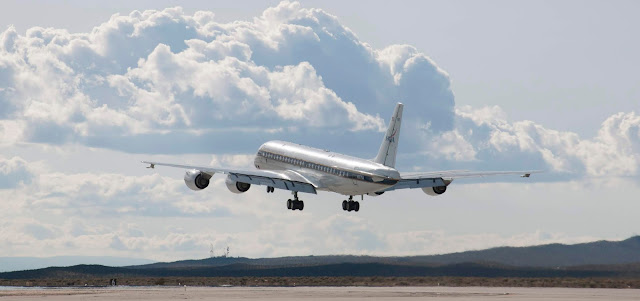NY, USA, August-28, 2019 /Aerospace --
According to the new market research report "Radome Market by Offering (Product (Radome Body, Accessories), Service), Application (Ground (Ground Vehicle, Telecom Towers, ATC, Air Defense), Airborne (Commercial, Military, UAV), Shipboard (Commercial, Military), & Region - Global Forecast to 2023", published by MarketsandMarkets™, the market is projected to grow from an estimated USD 1.45 Billion in 2018 to USD 1.83 Billion by 2023, at a CAGR of 4.78% from 2018 to 2023.
Browse 78 market data Tables and 40 Figures spread through 141 Pages and in-depth TOC on "Radome Market - Global Forecast to 2023"
The need to ensure cost-effective maintenance and integrate radomes with modernized weapon systems have propelled key players to undertake advancements in the radome technology. Radome manufacturers are focused on the development of radomes for air traffic control, satellite communications, and telemetry.
The introduction of the plasma radome technology for space-based antennas, advanced composite materials for aircraft radomes, and crystal technology for radomes in the aviation industry are expected to contribute to the growth of the radome market during the forecast period.
Based on offering, the product radome body segment is projected to lead the radome market during the forecast period
Based on offering, the product radome body segment is expected to lead the radome market during the forecast period. The radome body comprises composite materials, such as, glass-fiber, quartz, Kevlar, etc., Other types of materials are PTFE-coated fabric, aramid fibers, alumina, Pyroceram 9606, slip cast fused silica, etc. Foam and honeycomb cores are often added between inner and outer surfaces of radomes to provide low dielectric constant spacer materials and structural strength.
Ask for PDF Brochure : https://www.marketsandmarkets.com/pdfdownload.asp?id=157460281
Based on application, the airborne UAV segment of the radome market is projected to witness the highest growth during the forecast period
Based on application, the airborne platform UAV segment of the radome market is projected to witness the highest growth during the forecast period. Unmanned Air Vehicles (UAVs) have become an integral part of modern surveillance systems. Unmanned Combat Air Vehicles (UCAVs) are also being increasingly adopted by armed forces around the world.
The North America region is expected to lead the radome market during the forecast period from 2018 to 2023
The North America region is expected to lead the radome market during the forecast period due to high demand for newer aircraft and replacement of aging fleets. Rising military upgrades, such as the purchase of unmanned aerial vehicles, and innovative military jets are expected to lead to the rise in demand for the radome in North America during the forecast period.
Major companies profiled in the radome market report are General Dynamics (US), L3 Technologies (US), Orbital ATK (US), and NORDAM (US), among others.
MarketsandMarkets™ INC.
630 Dundee Road
Suite 430
Northbrook, IL 60062
USA : +1-888-600-6441
Email: newsletter@marketsandmarkets.com










